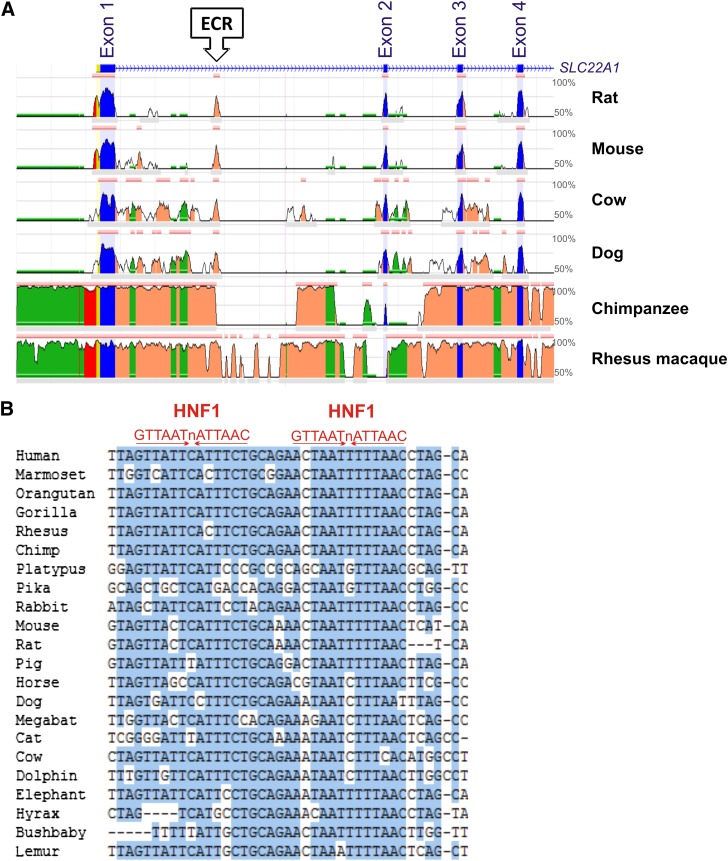Fig. 1.
In silico analyses of evolutionary conservation suggest binding of HNF1 to an evolutionary conserved region in intron 1 of the OCT1 gene. (A) Evolutionary conservation of the organic cation transporter OCT1 gene in mammals visualized using ECR Browser (http://ecrbrowser.dcode.org/). A 15.5-kb region of the OCT1 gene is shown. The region includes the promoter, the first four exons, and three introns. The X-axis represents genomic coordinates. The Y-axis represents the degree of conservation between the human genome (as a reference) and the corresponding mammalian genome. The conserved exon sequences are depicted in blue, the promoter sequences in red, and the intron sequences in orange. The repeated element sequences are depicted in green. The highly evolutionary conserved region in intron 1 is marked with an arrow. (B) Alignment of the highly conserved 40-bp sequence within the intron 1 ECR in 22 mammalian genomes. Conserved bases are highlighted in blue. The consensus binding sequences of HNF1 (shown in red) are given to indicate the two potential HNF1 binding sites.

